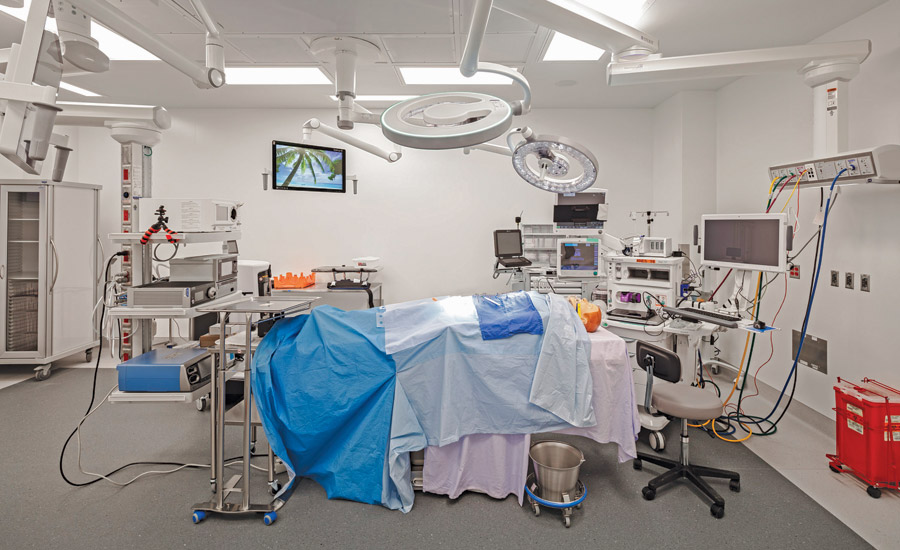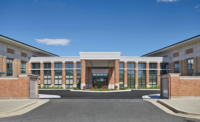University of Illinois Health Specialty Care Building
Chicago
BEST PROJECT
Submitted by: Pepper Construction
Owner: University of Illinois Hospitals and Clinics
General Contractor: Pepper/BMI Construction
Lead Design Firm/MEP Engineer/Electrical Engineer: Shive Hattery
Structural Engineer/Civil Engineer: David Mason + Associates
Subcontractors: Walsh Consulting Group; Target Group; Shen Milsom & Wilke
This new facility houses Illinois Eye & Ear at UI Health and a new outpatient surgery center. The project was the first use of a public-private partnership model for Illinois Healthcare. The six-floor building’s outpatient capacity allows the adjacent existing hospital to focus on acute care.
Early construction planning and strategic procurement during the design phase accelerated project completion by a year. For the three-year period from the onset of schematic design to the first patient day, the team successfully managed pandemic and supply chain disruptions, maintaining the original project completion date of June 2022. Construction began before design was fully complete.
Optimized space utilization and construction cost methodology enabled UI Health to expand their vision and maximize return on investment. Through a target value design approach, the project team members considered a wide range of alternatives for schematic design elements and committed to cost-effective choices that held true to the project goals for the medical program, efficiency of systems and sustainability, facade aesthetics and positive staff and patient experience.

Photo courtesy AJ Brown Imaging LLC
Bringing the main trade partners on early enabled critical information to improve both design and installation. The project cultivated a higher quality outcome by gathering immediate trade feedback and vetting selections and design with market availability. Constructibility reviews were conducted during the design phase. Rapid information turnaround and purposeful decision-making contributed to effective process control.
Construction employed around 500 individuals with a 40% minority workforce. About 35% of trade partners and 20% of professional services were minority-owned or woman-owned businesses.
During the pandemic, risk-mitigation plans advanced worker safety, helped the project get ahead of supply chain risk and enhanced protection of field operations. The all-in participation of team members—suppliers, subcontractors, tradespeople, managers, designers, owner—over the three-year project period secured an under budget completion despite the pandemic and supply chain disruptions.





Post a comment to this article
Report Abusive Comment